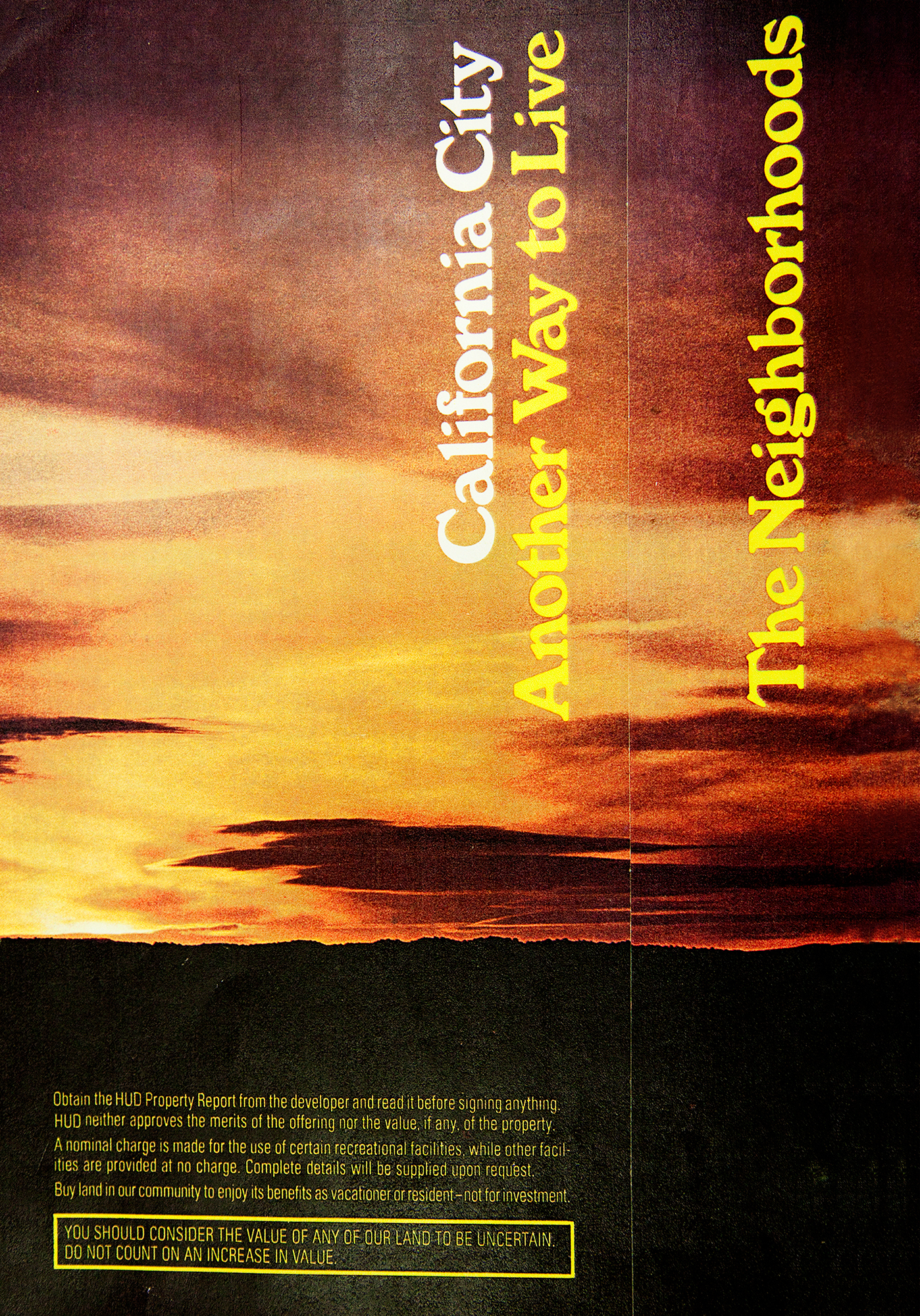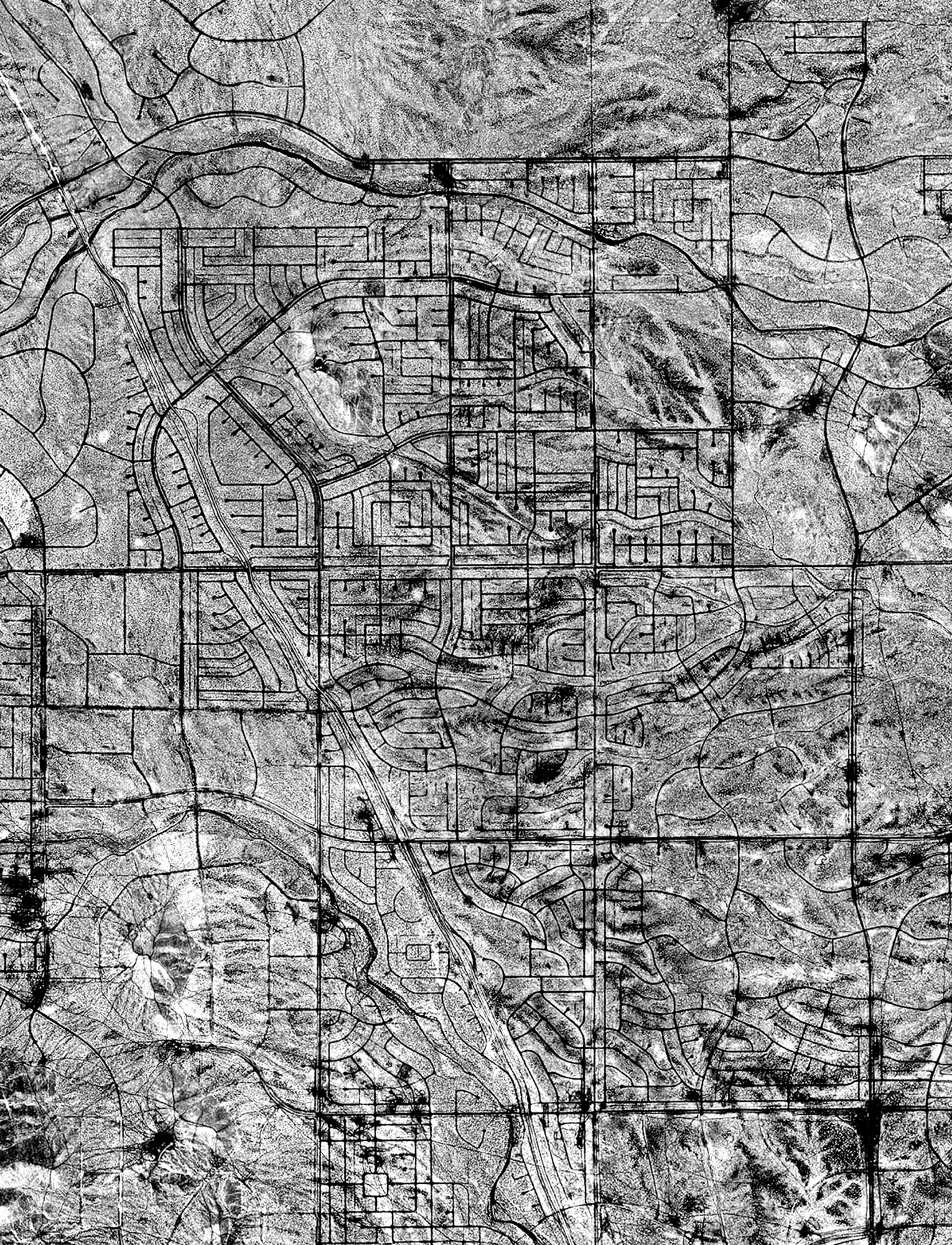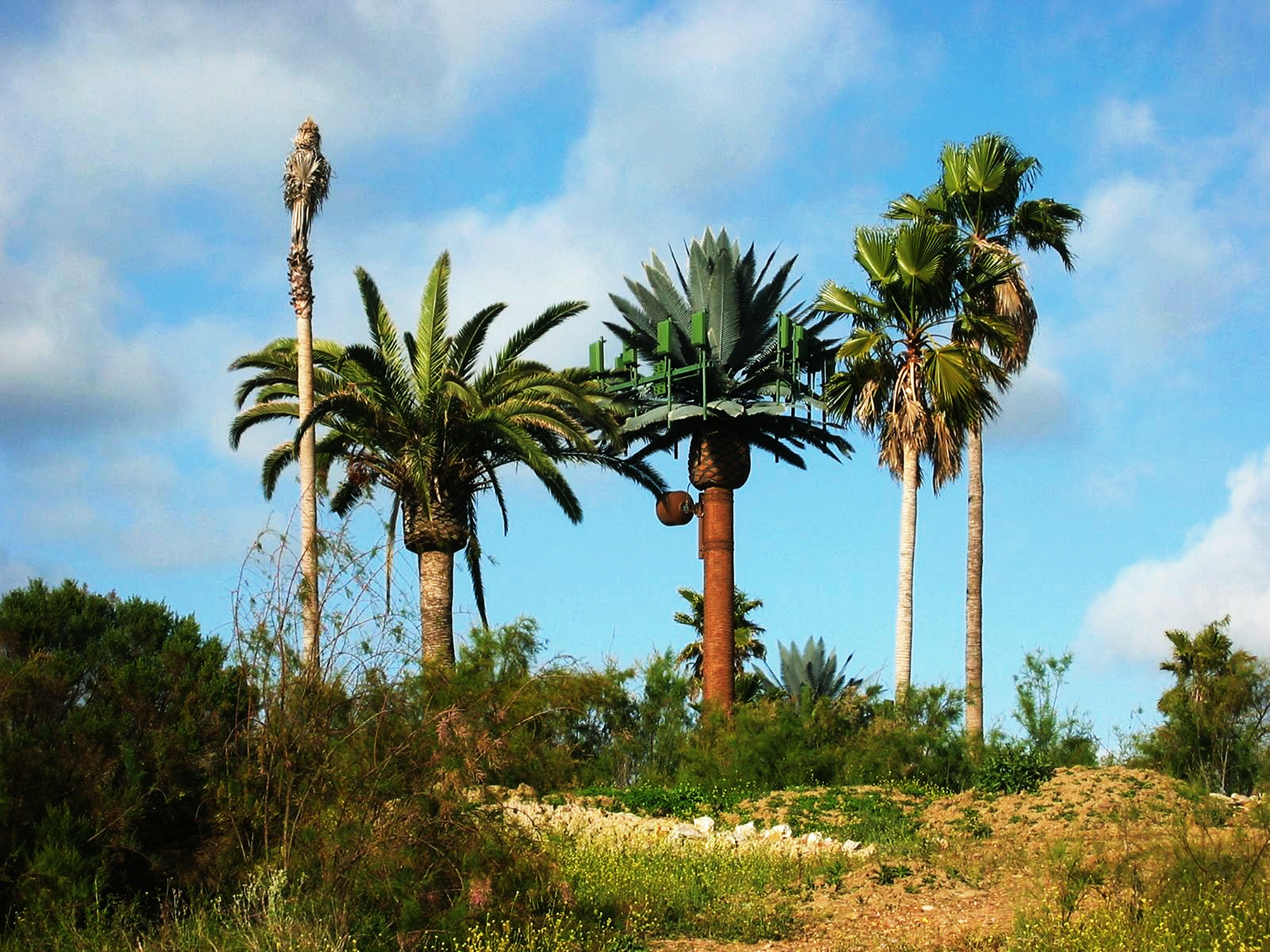The Circumference is Everywhere
video channel 1 TRT: 00:04:40, audio: The Lost Chord; performers unknown; Israel in Egypt, George Frideric Handel, recorded on Edison's yellow paraffine cylinder with a chorus of 4,000 voices recorded from 100 yards away; video channel 2 TRT:00:04:40, heavy machinery theme park offering first time users the ability to operate excavators and bulldozers
aerial map of California City, concrete street sign foundations recovered from CA City, models of Rafael Vinoly's Vdara hotel, land deed for Signal Hill cemetery, 1950's promotional materials for California City, The Circumference is Everywhere, 36 page book 13.5 x 19cm (numbered edition of 100, 85 English/15 Japanese)
Click here to purchase book
The Circumference is Everywhere lattices the foundations of suburban ruin, architectural terror, and illusory spectacles where imagination and experience remain indistinct. This anchoring narrative seeks to complete the story of these sites through the ruin of information as ritualistic and cyclical history, and to blur the lines between anthropology, science, and the mechanisms of fiction. In other words: it considers the possibility for buildings that are constructed to be torn down and postures the uncertainty of whether one’s experience is merely an unconscious input from the social and cultural signifiers that constitute a given account. These intertwining narratives are then projected, elided, and reconstituted in a myriad of forms where the past constantly haunts the foundations of a historical narrative.
I. A City in Ruin
100 miles Northeast of Los Angeles in the Mojave Desert lies a city abandoned in advance of itself, a ruin that is an aerial monument to misguided optimism that was conceived of by Nat Mendelsohn and intended to rival Los Angeles in geographic size and economic promise. From satellite images, the geoglyphic lines of a poorly planned labyrinth of streets stretch out for 203 miles against the desert backdrop. Devoid of occupiable infrastructure, the city resembles a lost ancient civilization where the only material remnants are the concrete foundations that held the meticulously titled street signs named after the vehicles that would have navigated its streets.
On one hand, this uninhabited street plan serves as the fingerprint of suburban sprawl that at one time had as much buoyancy as any other California development. On the other hand it is a ruin that contemplates and suspends a history through its absence. Much like the mysterious Nazca lines etched into the desert of southern Peru awaiting their own signification, our own modern ritualistic ghost grid of suburbia awaits its completion.
II. Illusion of Purpose
The double parabolic lens shaped Vdara hotel is a sleek, trendy, reflective facade that looms 57 stories above the Las Vegas strip. Designed by architect Rafael Vinoly, it is a monument to its own formal backlash and eventual destruction as the now-largest parabolic reflector on Earth. With each passing of the sun, its façade becomes a site of spectacular solar convergence, creating a “death ray” that moves directly over the pool area below; plastic cups, bags, and sandals are melted and sunning patrons leave with third degree burns.
As a point of reference: plastic shopping bags are typically made from polyethylene and have a melting point of around 130ºF, plastic cups that are made of polypropylene have a melting point of around 160ºF, and rubber sandals begin to melt at around 208ºF, and third degree burns involve all layers of the skin causing permanent tissue damage. As part of a city built for the future against the ages, the hotel is a quintessential example of the absent objective present. It seems to contaminate the future before the present takes hold, and in some ways jeopardizes the stars.
III. The Indifference of an Exchange
The oldest cemetery in Los Angeles County lies adjacent to the Winall Oil Company in Signal Hill. A majority of the tombstones therein date back to the mid 1800’s, and typically have two names inscribed per stone with only one of them having a death date. This is most likely the result of Winall Oil’s purchase of the original cemetery plot from Norman Argetsinger that stretched from east Spring Street to East Willow Street along Orange Avenue, leaving less than a quarter of the block that remained for the cemetery.The oil has since dried up beneath the purchased land; and the oil company now slant drills from beneath the grave plots, and pays royalties to the individuals who still have family members buried there.
It is doubtful that even those buried in the cemetery in the mid 1800s would have been decomposed enough to constitute the hydrocarbons that make up 80% of what is found in crude oil. Perhaps like the countless films the cemetery has been cast as a backdrop in, the space has become complete utility, with its’ interchangeable and moving coffins, where one thing disappears and another miraculously reappears somewhere else. Like an endless parade of fictive narratives that turn out to be real, the possibility of running our vehicles off of our remains seems like a viable option.
aerial map of California City, concrete street sign foundations recovered from CA City, models of Rafael Vinoly's Vdara hotel, land deed for Signal Hill cemetery, 1950's promotional materials for California City, The Circumference is Everywhere, 36 page book 13.5 x 19cm (numbered edition of 100, 85 English/15 Japanese)
Click here to purchase book
The Circumference is Everywhere lattices the foundations of suburban ruin, architectural terror, and illusory spectacles where imagination and experience remain indistinct. This anchoring narrative seeks to complete the story of these sites through the ruin of information as ritualistic and cyclical history, and to blur the lines between anthropology, science, and the mechanisms of fiction. In other words: it considers the possibility for buildings that are constructed to be torn down and postures the uncertainty of whether one’s experience is merely an unconscious input from the social and cultural signifiers that constitute a given account. These intertwining narratives are then projected, elided, and reconstituted in a myriad of forms where the past constantly haunts the foundations of a historical narrative.
I. A City in Ruin
100 miles Northeast of Los Angeles in the Mojave Desert lies a city abandoned in advance of itself, a ruin that is an aerial monument to misguided optimism that was conceived of by Nat Mendelsohn and intended to rival Los Angeles in geographic size and economic promise. From satellite images, the geoglyphic lines of a poorly planned labyrinth of streets stretch out for 203 miles against the desert backdrop. Devoid of occupiable infrastructure, the city resembles a lost ancient civilization where the only material remnants are the concrete foundations that held the meticulously titled street signs named after the vehicles that would have navigated its streets.
On one hand, this uninhabited street plan serves as the fingerprint of suburban sprawl that at one time had as much buoyancy as any other California development. On the other hand it is a ruin that contemplates and suspends a history through its absence. Much like the mysterious Nazca lines etched into the desert of southern Peru awaiting their own signification, our own modern ritualistic ghost grid of suburbia awaits its completion.
II. Illusion of Purpose
The double parabolic lens shaped Vdara hotel is a sleek, trendy, reflective facade that looms 57 stories above the Las Vegas strip. Designed by architect Rafael Vinoly, it is a monument to its own formal backlash and eventual destruction as the now-largest parabolic reflector on Earth. With each passing of the sun, its façade becomes a site of spectacular solar convergence, creating a “death ray” that moves directly over the pool area below; plastic cups, bags, and sandals are melted and sunning patrons leave with third degree burns.
As a point of reference: plastic shopping bags are typically made from polyethylene and have a melting point of around 130ºF, plastic cups that are made of polypropylene have a melting point of around 160ºF, and rubber sandals begin to melt at around 208ºF, and third degree burns involve all layers of the skin causing permanent tissue damage. As part of a city built for the future against the ages, the hotel is a quintessential example of the absent objective present. It seems to contaminate the future before the present takes hold, and in some ways jeopardizes the stars.
III. The Indifference of an Exchange
The oldest cemetery in Los Angeles County lies adjacent to the Winall Oil Company in Signal Hill. A majority of the tombstones therein date back to the mid 1800’s, and typically have two names inscribed per stone with only one of them having a death date. This is most likely the result of Winall Oil’s purchase of the original cemetery plot from Norman Argetsinger that stretched from east Spring Street to East Willow Street along Orange Avenue, leaving less than a quarter of the block that remained for the cemetery.The oil has since dried up beneath the purchased land; and the oil company now slant drills from beneath the grave plots, and pays royalties to the individuals who still have family members buried there.
It is doubtful that even those buried in the cemetery in the mid 1800s would have been decomposed enough to constitute the hydrocarbons that make up 80% of what is found in crude oil. Perhaps like the countless films the cemetery has been cast as a backdrop in, the space has become complete utility, with its’ interchangeable and moving coffins, where one thing disappears and another miraculously reappears somewhere else. Like an endless parade of fictive narratives that turn out to be real, the possibility of running our vehicles off of our remains seems like a viable option.





